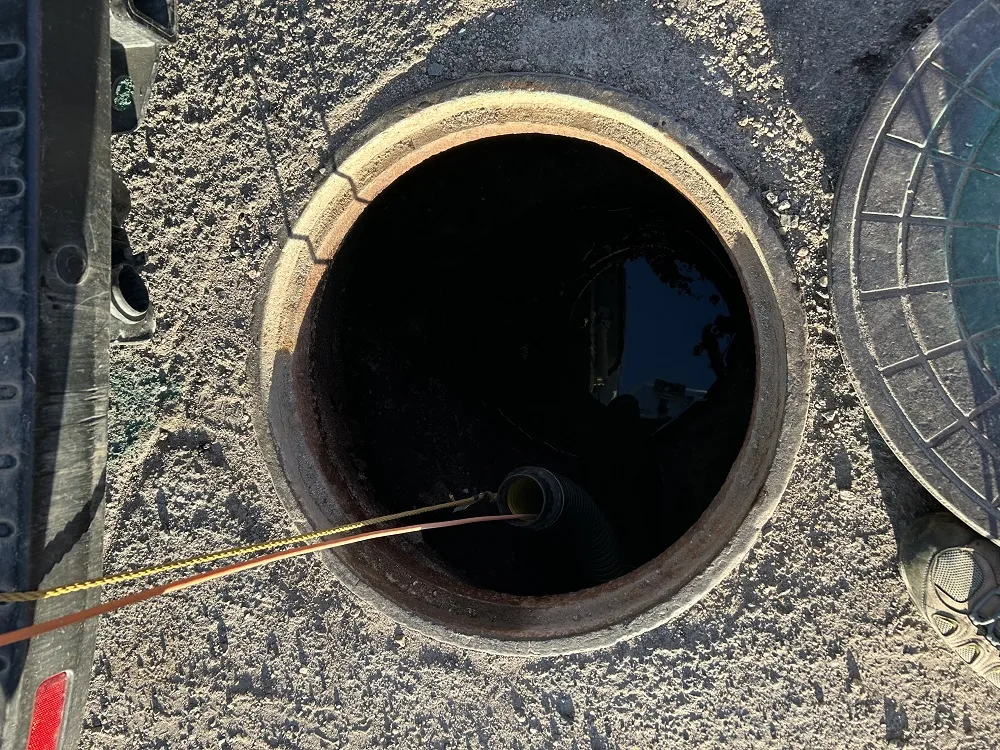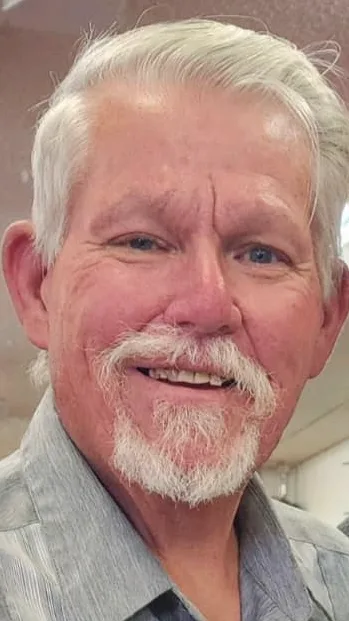A view into the manhole with the guidewire and camera feed about 75 feet down at this point. Photo by Aaron Ricca
KINGMAN – There may be a roving camera rolling through your sewer pipes and you wouldn’t even know it.
The City of Kingman Wastewater Department has a nifty CCTV (closed-circuit television) van that has the unique capability of sending a rover equipped with a video camera that can travel up to 1,000 feet of various sizes of sewer lines.
As of 2023, there were roughly 211 miles of city sewer lines in the city. That has probably increased with the rapidly growing amount of construction in the city.
The three-man collection crew was scouting a sewer line at the intersection of Fourth Street and Goldroad Avenue last week.
Although the term ‘collections’ might connotate taking people’s money, it’s quite different.

“We make sure the lines are clear to ensure the efficient flow of sewage to the treatment plants,” said Joe Wyatt, one of the collection crew members.
The wastewater team dropped the rover in the manhole at 6:30 a.m. where it would take roughly 30 minutes to travel 273 feet to the end of the line they were inspecting. They made their report and began retracting the line at 7:05 a.m. and the rover was back on earth about ten minutes later.
“It a lot quicker to pull the thing out than to send it down,” Wyatt said.
The van crew is made up of two rover line handlers and observers and one camera operator inside the vehicle. They can inspect pipes of different sizes (six, eight and 10 inches and up which the rover can be outfitted with different tire sizes to accommodate) and materials (clay, metal, plastic, and fiberglass for example). The rover can spot cracks and obstructions plus take photos of those and other deficiencies.

The crew takes readings that include distance, connector pipes from homes and businesses and deficiencies, all of which get logged into the system computer. Those readings get sent to the city engineer’s office to update sewer line maps. Maps can be old and have discrepancies. It’s part of the CCTV van’s job and its crew to help fix that problem.
Tuesday’s project started Monday and Wyatt and company had already found one discrepancy.
“According to our map, the lines we’re inspecting indicated that they connect to different manhole covers,” he said. “That wasn’t the case. Some of these lines come to a dead end. The map was wrong and now the city engineers can update that map.”
The number of jobs per week can vary. Jobs can last three hours to two days. New construction inspections can last up to a week.
There are miles of old pipes throughout the city that are being constantly inspected for current status and defects. The city now requires that all new construction requires a CCTV inspection.

The van and rover save the city the money and effort of having to tear up streets and disturb residents and businesses to inspect the pipes.
“What I like about this van is that instead of digging up lines, we can just send the rover in,” said Wyatt. “Plus, it helps update maps that aren’t always right. There could be a buried manhole cover, or in the case of (Goldroad Avenue), this particular pipe doesn’t connect between the manhole covers as shown by our map.”
The Standard was unable to get a number on the cost of the van or how much money it saves the city by not having to dig up the streets to inspect the pipes.
The crews have a training process to operate the van.

It starts with a weekend-long course to get the main operating certificate. That class is followed up with periodic refresher training throughout the year. The instruction is also standardized on a national level. Public works personnel throughout the U.S. use the same acronyms, standard operating procedures, equipment and computers and computer software.
There’s a combination of companies and contractors the crew collaborates with regarding the rover, computer software and the van. All the parts come together to complete a job.
“It’s really neat when we get this thing working,” Wyatt said.
Arguments can stew between residents and the city as far as plumbing issues and whose side the problem is on. The CCTV van easily can resolve any disputes.
“What I love the most about this is that (the van) saves so many arguments and money,” said Wyatt. “Water is expensive. Sewer is expensive. We want to change the face of that.”
Aaron Ricca











